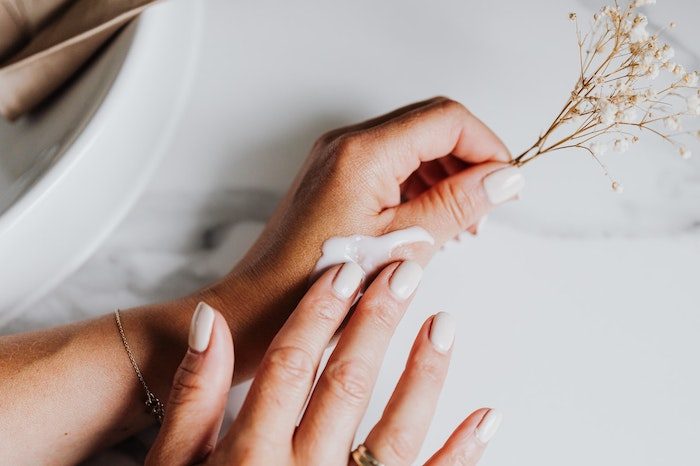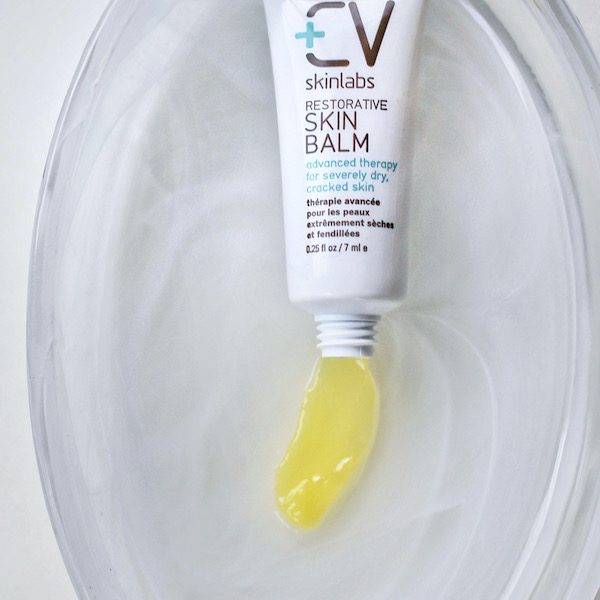
What is the difference between cream and lotion?
Does it matter which one you use, and when?
We think so! Here’s a rundown of the important facts you need to know.
The Difference Between Cream and Lotion
Moisturizing products like lotions, creams, and ointments are all important for proper skin care. They help restore moisture to the skin. Some may also help the skin hold onto the moisture it has more efficiently.
They’re not all the same, though. They vary based on their ingredients, textures, and intended uses.
What Is a Lotion?
A lotion consists of good old H2O (water) and other moisturizing ingredients like oils and glycerin. Because lotions tend to have more water than other moisturizing products, they have a lighter feel and are often absorbed more quickly.
Lotions are less occlusive than other moisturizing products. The more water-based formula is better for hot, summer days when we tend to sweat more. Lotions won’t block the pores and can better work to keep moisture in your skin without causing problems.
You’ll likely enjoy a lotion if:
- You want a lightweight, fast-absorbing solution
- Your skin needs only light moisture
- You don’t like a heavy consistency on your skin
- You have oily skin and only need a balancing moisturizer
- You’re using it on a hot day when you’ll likely be sweaty
What Is a Cream?
Creams are generally thicker in consistency than lotions, as they have less water in them. They still have water (or water mixed with extracts), but they have a higher concentration of oil or butter to moisturize. They create a stronger barrier on the skin to help trap moisture and keep the skin feeling soft and supple all day long.
Creams may feel greasier or heavier than lotions, but that’s not always the case. It depends on the formulation and what ingredients are used. It also depends on how well your skin absorbs the cream. Skin that is probably exfoliated beforehand will suck in the ingredients more readily.
You’ll likely enjoy a cream if:
- You have dry skin
- You are 40 years old or older (skin gets drier as we age)
- It is wintertime when the cold, dry air saps more moisture from the skin
- Your skin is damaged and you need to strengthen the outer barrier
- You have eczema or dermatitis
- Your knees, elbows, and heels need help!
What Is An Ointment?
Whereas creams are thicker than lotions, ointments are thicker than creams. They typically have more occlusive ingredients, as their primary goal is to trap moisture against the skin so that it doesn’t evaporate as quickly. This also means that the ointment won’t absorb as fast—it tends to sit on the surface of the skin for a longer time.
Medicated products like topical antibiotics often come in an ointment formula because it’s thicker and stays on the skin longer, allowing the active ingredients to do their job. An ointment applied to a wound and then covered with a bandage will help speed healing and skin regeneration.
You’ll likely need an ointment if:
- You have a wound that needs to heal
- You have chapped lips
- You wash your hands several times a day
- You’re dealing with dry, chapped skin
- You’re treating a rash or chaffing
What’s the Difference Between Face and Body Moisturizers?
Though the differences we talked about above can apply to all types of creams and lotions, there are some small differences between face lotions and body lotions, as well as between face and body creams.
Face lotions and creams are designed specifically for the face and its needs. Facial skin tends to be thinner than skin on the rest of the body. It’s also more exposed to the elements, including UV rays, pollution, and weather. There are more sebaceous glands on the face, too, which can affect the types of products you use.
A good facial moisturizer, then, will address these issues.
Body skin, on the other hand, is usually thicker than face skin, and has fewer sebaceous glands. The fat layer under the skin is thicker on the body than on the face. In some areas, like on the hands and the soles of the feet, there’s a whole extra layer of skin to provide protection.
The skin on the body also turns over less often than the skin on the face. It takes longer to replace old skin cells with new ones, and dead skin cells can linger on the skin longer. Because the body has fewer sebaceous glands, it can also be naturally dryer than the skin on the face.
These differences explain why it’s important to use products that are meant for the face or the body to get the best protection and results. Keep in mind that age-related changes in the skin—such as increased dryness, thinness, flaking, sagging, and wrinkling—can affect the body’s skin too.
CV Skinlabs Offers Cream and Lotion
CV Skinlabs offers Calming Moisture—a lightweight, yet deeply hydrating cream for the face—and Body Repair Lotion, a moisturizing and hydrating lotion for the body. We also have our Restorative Skin Balm, which is our ointment. As you can see, we cover it all!
All products are made for all skin types and are 100 percent free of synthetic fragrances and toxic ingredients, so if you haven’t tried them yet, we encourage you to click here for more information. They’re perfect for the whole family.
Did you know the difference between cream and lotion?




